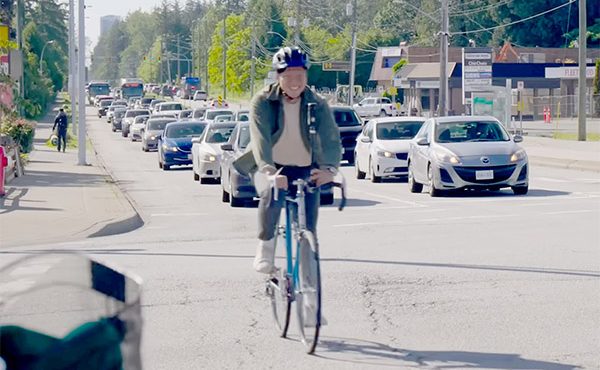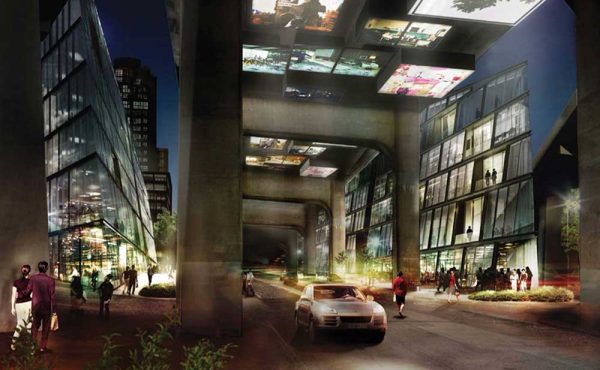
[Editor’s Note: This is final Feature looking at the 2012 CAPS Conference that occurred in Vancouver in February.]
As mentioned in Part One of this series, the Canadian Conference of Planning Students (CAPS) Conference converged in Vancouver at Simon Fraser University’s Harbour Centre during early February. A yearly pilgrimage for hundreds of planning students across Canada, the conference allows young aspiring urbanists the chance to connect and converse on a diversity of issues ranging from sustainable transportation, district energy and social equality.
Widely captured under the title, Planning Horizons: The Edge, Future and Potential of Planning, this year’s conference focused on the four key themes: Inspiring Potential, Championing Creativity, Finding Voices and Widening our Lens. Urban planning students also found solace in connecting with a large national network of people equally passionate about the state of cities, especially within the Canadian context.
This year’s program naturally had a Vancouver focus—with reflections on life in the Downtown East Side, housing affordability, urban design and sustainable development as key theme of the presentations and discussions. Speakers included former City of Vancouver planning directora Brent Toderian and Larry Beasley, Gordon Price from Simon Fraser University, and Julien Agyeman from Tufts University Boston Medford. Spacing Vancouver’s Andrew Cuthbert covered some of their words of wisdom in the first part of this series.
A young and captive audience of eager planners listened to the facts and falsities surrounding the future principles and applications of planning. Climate change, population growth, immigration, aboriginal issues, rural-urban migration patterns and economic stability were highlighted as imperative to the creation of a robust future for cities across Canada and the world. And although the many talks that took place were fascinating, one of the most interesting aspects of the conference was the tours I had the opportunity to attend.
For example, Tanya Fink—Social Planner for the City of Vancouver—facilitated a walking tour of the Downtown East Side starting at Crab Park near the Port of Vancouver which allowed participants to discover a unique urban oasis nestled amongst a harsh industrial landscape. Crab Park—also known as Portside Park—has become a gathering place for the residents of the area, including the homeless and under-housed.
Planners working in this area of the Vancouver are dealing with a multitude of issues as it evolves into a highly desirable community complete with heritage buildings, mountain views and a close proximity to downtown. Many of the most pressing issues are related to drug use; an intrinsic part of the fabric of life in the Downtown East Side.
According to Fink, it is a challenging situation requiring ingenuity and innovation in planning, requiring far more inclusive community engagement initiatives. The rise of safe injection sites, mobile community health hubs and methadone treatment clinics, has made Vancouver into a prime example of where these policies can be applied.
After listening to stories of the challenges that face planners in the area, we wandered via assigned routes on a pre-determined map. After tromping through the busy ‘exchange’ district of Main and Hastings, we wandered off for a tasty treat from the best Chinese bun place in town—New Town Bakery! Chomping into a delicious chicken or vegetable bun encourages even the most hardened of souls to savour the moment and put the concerns of the community behind them, if even for a second.
Many other tours and breakout sessions were occurring in tandem; therefore, it was impossible to catch everything the conference had to offer. A tour of Simon Fraser University’s new ‘UniverCITY’ campus exposed participants to the breathtaking views and hearty problem-solving required to build a community atop a hill, while climate adaptation planning was discussed at the Richmond waterfront. Metro Vancouver’s transportation authority, Translink, also provided an overview of some key projects and land-use directives of the authority.
The diversity of options available was representative of the diversity of projects and research that are happening worldwide, including how rapid profession of planning is changing. One major lesson for young planners that was clear after experiencing the events and tours given at the 2012 CAPS Conference is that they must become highly attuned to the intricacies of balancing the priorities of economic, social and environmental issues facing urban areas in our frenetic modern world.
Foresight is only clear if one can see in the first place. Keeping this in mind, the creative ideas and discussions being expressed at this year’s CAPS conference are a sign that our direction is becoming clearer in the face of an increasingly complex world.
***
The first piece of the CAPS Conference 2012 series can be read here.
**
Cameron Barker is passionate about cities, the environment and urban space. He graduated from Ryerson University in Urban and Regional Planning and has worked in municipal city planning and environmental planning including stints in Suriname, South America and Australia. He currently resides in Vancouver and assists the Vancouver Public Space Network and Sustainable Cities International in his free time.




